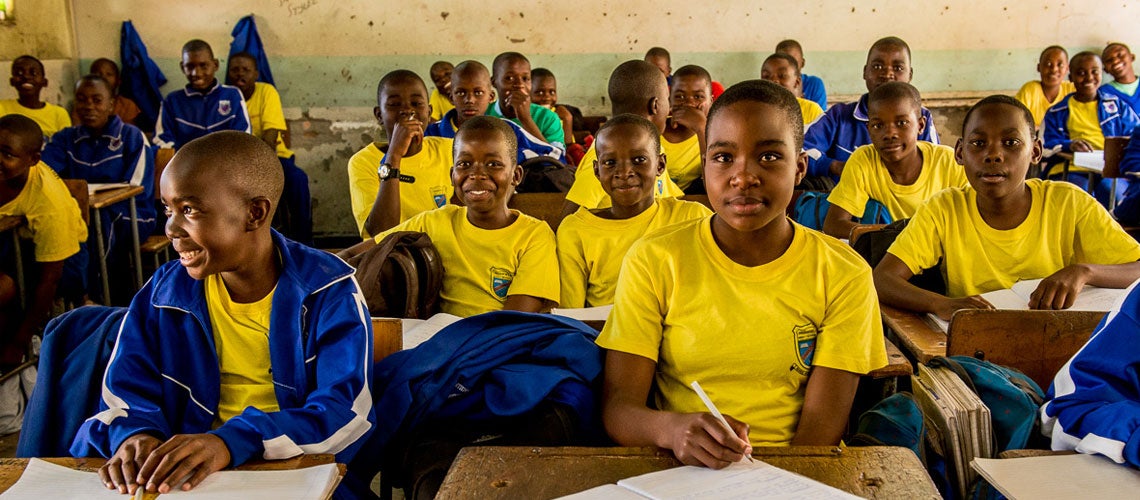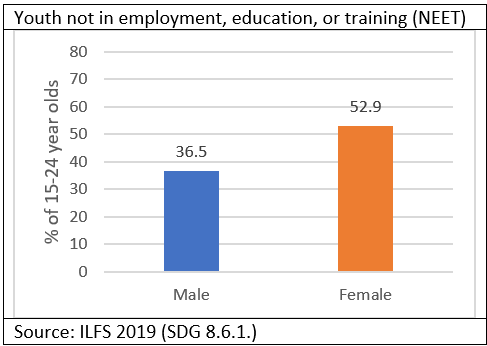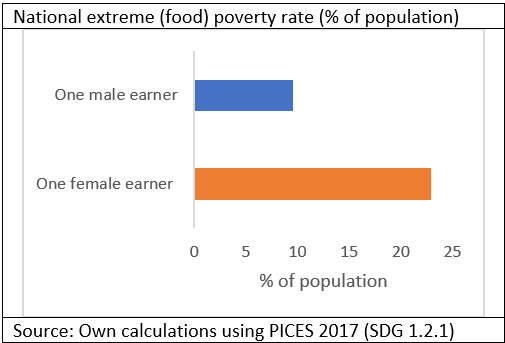 Girls in class at school in Zimbabwe. Photo: ArneHoel/WorldBank
Girls in class at school in Zimbabwe. Photo: ArneHoel/WorldBank
Having celebrated International Women’s Day earlier this month, we’d like to reflect on what we see as lost opportunities for girls and women in Zimbabwe with the aid of nine graphs. We’re also putting forward a few solutions for how we can do better for women and girls going forward.
Girls start with an advantage in early childhood, let’s keep them in school.
Girls in Zimbabwe have a lower probability than boys of dying before their fifth birthday. Girls under five years are also less likely to be malnourished as measured by their stunting and wasting rate. There is also a parity in access to early childhood education. In 2019, among children between the ages of three and four, a slightly higher share of girls (29.1%) than boys (27.7%) attended early childhood education.

But the early advantage fades as girls progress through school. By late adolescence or early adulthood, a clear gap with boys emerges.
The advantage girls enjoy in early childhood persists up to the primary (age 6 – 12) and lower secondary level (age 13–16) where they are more likely to be in school and complete the respective level of schooling. However, the situation is reversed at the upper secondary level (age 17 – 18). Girls of upper secondary school age are significantly more likely than boys to be out of school, and they lag boys in school completion. There are various compounded barriers to school attendance and completion for girls.

A significantly higher proportion of young girls (age 15 – 24) are not in employment, education, or training (the so-called NEETs), which means they are unable to enhance their futures (or that of the country) or build capital (their livelihoods) through productive economic means. This has implications for their long-term employability and earnings potential.

One of the reasons for higher female dropout from upper secondary school and the labor market is early pregnancy. In 2019, 17.6% of women aged 15-19 years old had a live birth and 24.1% of women 20-24 years old had a live birth before age 18.
School dropout and lack of training, let’s keep them in school.
Women are less likely to participate in the labor market at all ages. Even when women have a job, they are more likely to work informally in family farms or household businesses.

Due to the inferior labor market outcomes, households with only one female earner are poorer compared to households with one male earner. The difference is explained by single male earners holding more remunerative jobs. In 2017, wages and salaries were the primary sources of income for 28.6% of single male earners, while it was so for only 13.6% of single female earners.

Considering this evidence, the policy priority should be to keep girls in school longer, at the upper secondary level and beyond, so that they can acquire the skills necessary for good jobs . To that end, programs such as adolescent sexual and reproductive health education and conditional cash transfers may help. For example, a recent World Bank-funded pilot in Buhera district showed that providing menstrual hygiene management kits combined with cash transfers and livelihood grants to adolescent girls and their households increased adolescent girls’ school attendance by 30%, with students not missing school increasing from 29% to 60%.
There are several policy options that can be deployed as pathways to close the gap for women and girls. These include gender-sensitive technical and vocational training connected to labor market demand to build market-relevant skills. After school, programs such as on-the-job training and apprenticeships can help women transition from school to work. Job matching services, career guidance, and work placements can also support school-to-work transitions.
The key? Keep girls in school! Let’s work together to ensure that women and girls are not left behind. This is critical in the attainment of development outcomes, the growth of economies, and the future of our world.



Join the Conversation